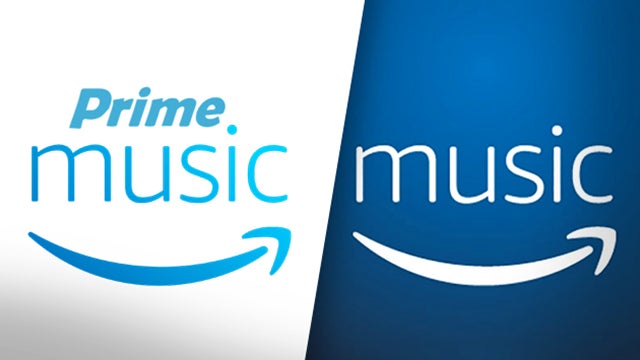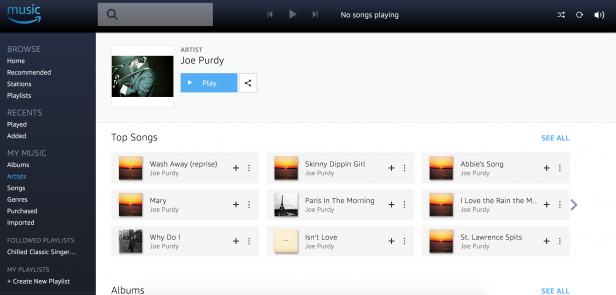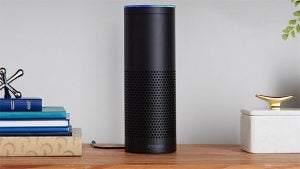Amazon Music Unlimited vs Prime Music: What’s the difference?

Amazon Music Unlimited vs Prime Music: What’s the difference between Amazon’s two music streaming options? We take a look.
Not only are CDs dying, so too is downloading; and while vinyl continues to make a comeback, most people are getting their music fix via streaming.
There’s no shortage of options in that department, either. Spotify and Apple Music are two of the big names in this field, but there are also options such as Jay Z’s Tidal and Amazon’s own offering.
To make things a bit more complicated, Amazon’s music streaming service comes in two flavours: Amazon Music Unlimited and Amazon Prime Music. What’s the difference? Well if you’re in a rush the short answer is: you get more songs with the Unlimited option. But we know you want this thing dissected in details, so here’s what you need to know.
Amazon Music Unlimited vs Prime Music – Price
First up, the all-important price. You can get access to Prime Music by signing up for Amazon Prime. That’ll cost you £79 a year or £7.99 a month (if you’re planning on sticking with Prime for 12 months it’s worth going for the annual subscription as you’ll save around £20 – just remember to cancel it before it auto-renews).
The benefit here is that you’ll get access to all the other Prime perks, such as one-day delivery on thousands of items from Amazon’s store, access to the Prime Video streaming service, and a whole load more. Best of all, you can try it for free for 30-days to see if it’s right for you.
So, how much more will Amazon Music Unlimited cost you? Well, the monthly price remains the same at £7.99 for the standard tier – you’ll have to already be a Prime member to get this price, though.
If you aren’t signed up to Prime alreay, you can still set up a Music Unlimited account but you’ll have to pay £9.99 a month. If you go for this option, remember, you won’t be getting all the added extras that come with Prime membership.
Related: Netflix vs Amazon Prime Instant Video

We’d recommend signing up for Prime and then adding Music Unlimited as an extra option if you’re looking to take Amazon up on its full music streaming offer. That works out to £15.98 per month for Prime membership and access to the full music streaming catalogue – not a bad deal.
But that’s not all. There are a few more subscription options to choose from when it comes to Amazon Music Unlimited. First, if you own an Amazon Echo smart speaker, the company will let you sign up for just £3.99 a month. That means you’ll be able to listen to the full Unlimited catalogue, but only through ONE of your smart speakers – whether that’s an Echo, Echo Dot, or Echo Tap.
Even with that limitation, it’s a decent offer, so if you fancy giving it a go just say “Alexa, try Amazon Music Unlimited” in range of your speaker and it will start the sign up process.
Next up, there’s the option of the family plan, which costs £14.99 a month or £149 for the annual subscription, though, if you’re not signed up to a Prime membership, you’ll only have the option of paying monthly. Going for the family plan means you and five others can make use of all the Music Unlimited benefits, including individual accounts and recommendations.
Related: Amazon Echo review
Amazon Music Unlimited vs Prime Music – Catalogue
So, you know how much it all costs, but what are you actually getting for your money? Obviously, the Unlimited service provides more songs and features, but with Prime Music, you still get access to two million songs. As Amazon puts it, the service “features two million songs and more than a thousand playlists and stations programmed by Amazon’s music experts.”
That basically means you’re getting a rotating selection of 2 million songs, that will change depending on agreements Amazon has with various record labels. How often it changes and when will depend on those contracts with music providers.

Amazon Music Unlimited is the company’s attempt to take on the likes of Spotify and Apple music, and provides all the features and functionality of Prime Music. But with Unlimited, you’ll get 40 million songs and thousands of “expert-programmed” playlists and stations. You’ll also get new releases from artists as they become available (unless a particular artist strikes a deal with other streaming services for exclusivity).
Amazon Music Unlimited vs Prime Music – Apps and accessibility
Accessing your music, whether you’re a Prime Music or Unlimited subscriber is easy. If you’re a Prime member, you can stream tracks and albums directly through the Amazon site just by clicking the “Listen Now” button when you see it on any music product, whether that’s an album or single etc.
What’s more, you’ll also be able to add Prime Music to your Amazon Music Library, which lets you stream it through the Amazon Music App. You’ll also be able to access Amazon Music Unlimited through both the web player and the app.
So, what is the Amazon Music App actually like? The company has refined the interface in recent years, so it’s a lot better than it used to be. What’s more, you can get the app for pretty much any platform you can image, from your phone to your tablet to your car – not to mention the Amazon Echo functionality. Here’s the links for the mobile version.
 Amazon Music works with the Echo smart speaker
Amazon Music works with the Echo smart speaker
Amazon Music Unlimited vs Prime Music – Features
Firstly, it’s worth noting that both Amazon Prime Music and Music Unlimited allow you to stream music ad-free. But there’s a host of other features that are worth checking out. Here’s a rundown:
Offline
Offline playback is a big consideration when it comes to the whole streaming thing. After all, if you lose connection, you lose music. Fortunately, both Amazon Prime Music and Music Unlimited allow you to download your favourite tracks for listening offline. Handy!
Radio
Looking for personalised suggestions based on your favourite artists? Luckily, Amazon has provided a ‘Radio’ feature that offers personalised radio stations which serve up music that the company thinks you’ll like, based on your listening history. and will be able to filter by artists, genres, and popular titles. You can even search for radio stations based on a ‘mood’.
You’ll find the Radio feature in both services, but while Prime Music offers more than a thousand playlists and stations, Music Unlimited comes with thousands.
Alexa and Amazon Echo Support
Alexa is Amazon’s virtual assistant and the heart of the company’s Echo smart speaker and its smaller counterparts, the Echo Dot and Tap. That means, whether you’re a Prime Music user or an Unlimited subscriber, you’ll be able to ask Alexa to play songs based on an artist, genre or even a mood if you’re listening through one of those devices.
Voice commands are numerous, and include instructions such as “Alexa, play the new song by Bruno Mars,” “play music for a dinner party,” or “play Led Zeppelin’s greatest hits”.
Playlists
You’ll be able to create your own custom playlists regardless of whether you’re using Amazon Prime Music or Music Unlimited. There’s also the option to save curated ones to your collection on both services.
Let us know what you think of Amazon’s music streaming services in the comments.

